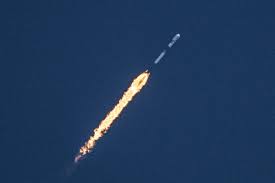Falcon 9 B1067
The Falcon 9 first stage booster, known as B1067 in the SpaceX fleet, achieved a monumental feat by embarking on its 20th journey into space. This remarkable milestone underscores its reliability and endurance, having played pivotal roles in various missions, including Crew Dragon astronaut launches, Cargo Dragon resupply missions to the International Space Station, and numerous Starlink deliveries.
The Journey of B1067
Historic Landing on ‘Just Read the Instructions’
Approximately 8.5 minutes post liftoff, B1067 gracefully touched down on the SpaceX droneship ‘Just Read the Instructions,’ marking its 83rd successful landing aboard JRTI and the 316th booster landing in SpaceX’s history.
Payload: Starlink V2 Mini Satellites
The Falcon 9 mission carried 20 Starlink V2 Mini satellites, a significant advancement in satellite technology. Among them, 13 satellites boast direct-to-cellphone capabilities, promising enhanced connectivity and communication.
Insights from Elon Musk and Michael Nicolls
Record-Breaking Latency Achievements
Elon Musk, SpaceX’s visionary founder, shared a noteworthy update on Starlink’s performance via social media platform X (formerly Twitter) on June 2. He announced Starlink’s achievement of a new internal median latency record of 28ms, with plans to further reduce median latency to below 20ms in the US.
Strategic Vision for Starlink’s Expansion
Michael Nicolls, SpaceX’s vice president of Starlink Engineering, highlighted the impact of the recent Starlink launches in May. Notably, he emphasized the progress towards providing initial cellphone service in partnership with T-Mobile, with 26 direct-to-cellphone Starlink satellites already deployed, representing over eight percent of the required constellation.
The 20th flight of Falcon 9 booster B1067 signifies a remarkable achievement in SpaceX’s quest for space exploration and satellite deployment. With each successful mission, SpaceX reaffirms its commitment to advancing technology and expanding global connectivity through innovations like Starlink.




